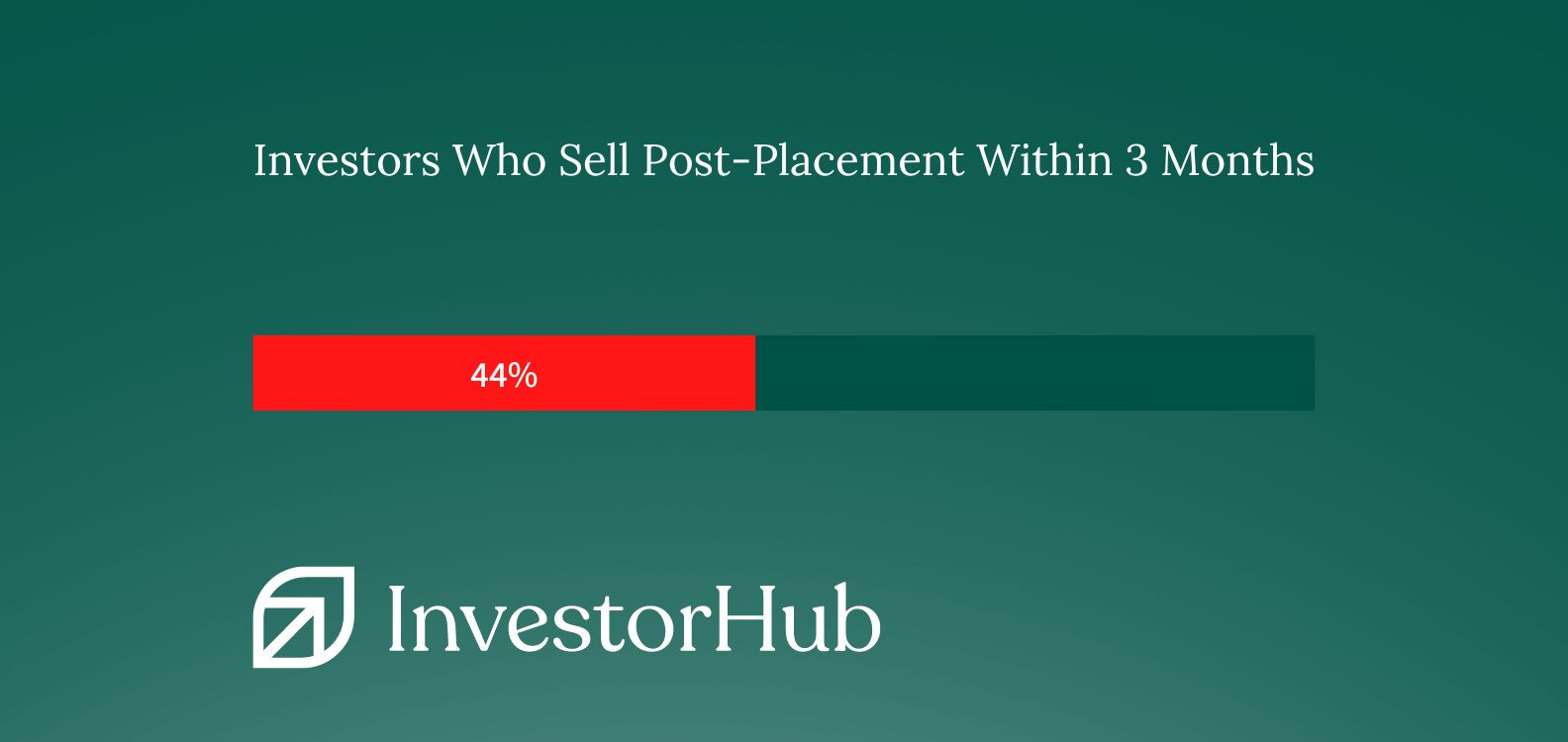How investor conviction affects post-placement activity.
When companies raise funding via a secondary capital raise like a placement, it's typically done at a discount to the last traded price to incentivise investor participation. Depending on the post-placement performance of the company, there's usually a tranche of investors who sell out their holdings when it's profitable to do so.
InvestorHub recently reviewed and analysed the post-placement activity of dozens of issuers to understand just how prevalent this trading activity is. As it turns out, it's likely higher than you think!
We've found that, on average, 44% of shares bought during placement are sold within the first three months of holding.
You read that correctly… your investors soon sell almost half of all your shares issued during a placement.
Imagine raising $100 million via a placement and facing $44 million in additional selling pressure over the next 90 days, the last thing a company needs after raising funds.

This investor behaviour insight demonstrates the importance of post-placement retention and engagement tools that issuers need to leverage. You may want to consider minimising short-term profiteering, given the selling pressure implications for your share price.
The best place to start is to establish yourself as more than a position for an investor, and an actual investment they’ll identify and attach to (something that InvestorHub can help with).
